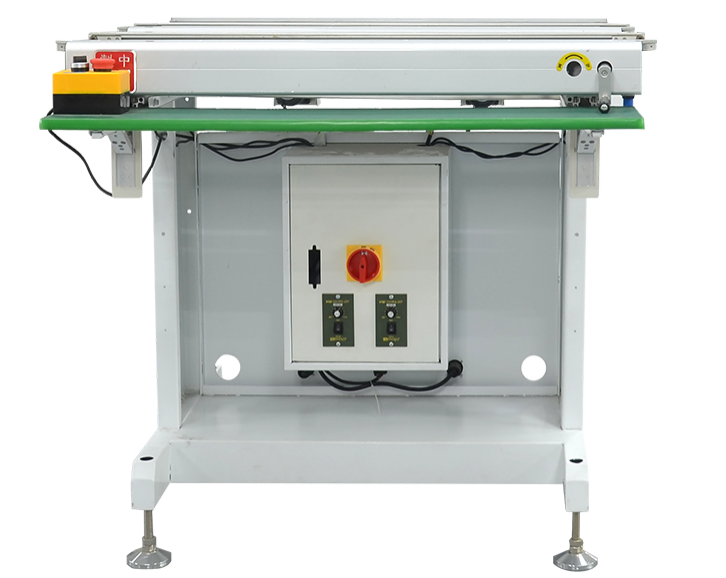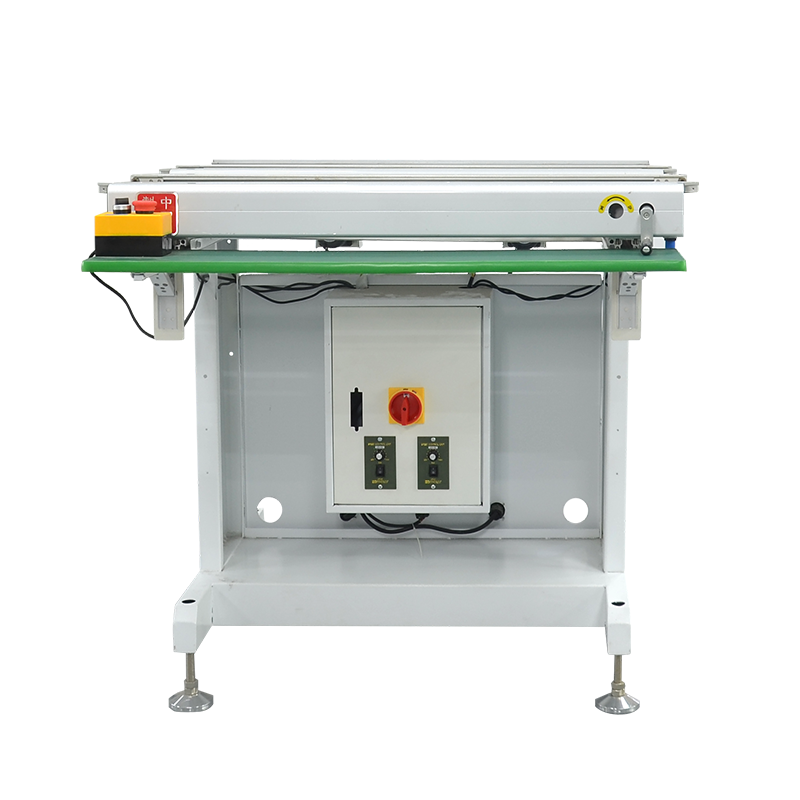이메일 형식 오류
emailCannotEmpty
emailDoesExist
pwdLetterLimtTip
inconsistentPwd
pwdLetterLimtTip
inconsistentPwd


China Infeed Conveyor Price: Comprehensive Guide and Insights
In the ever-evolving world of industrial automation, infeed conveyors play a pivotal role in ensuring seamless production processes. For businesses looking to invest in these essential components, understanding the "China infeed conveyor price" landscape is crucial. This guide delves into the various factors influencing prices, benefits of sourcing from China, and practical tips for making an informed purchase decision.
Introduction to Infeed Conveyors
Infeed conveyors are integral to automated production lines, providing a consistent flow of materials or products into subsequent processing stages. These conveyors are designed to handle various items, including raw materials, semi-finished goods, and finished products. They ensure efficiency, reduce manual handling, and minimize downtime, making them indispensable in manufacturing, packaging, and distribution centers.
What is an Infeed Conveyor?
An infeed conveyor is a type of conveyor system specifically designed to feed materials into another machine or process. These conveyors are typically equipped with sensors and controls to manage the flow rate and ensure smooth operation. They come in various configurations, including belt conveyors, roller conveyors, and chain conveyors, each suited for different applications.
Factors Influencing China Infeed Conveyor Price
The price of infeed conveyors from China can vary significantly based on several factors. Understanding these factors will help businesses make cost-effective decisions while ensuring they get the best value for their investment.
Material and Build Quality
The material used in constructing an infeed conveyor greatly affects its price. High-quality materials like stainless steel, which offer durability and resistance to corrosion, tend to be more expensive. In contrast, conveyors made from lighter materials, such as aluminum or plastic, may be more affordable but might not offer the same level of longevity.
Conveyor Type and Specifications
Different types of infeed conveyors have different price points. For instance, a simple belt conveyor will typically cost less than a complex chain conveyor with advanced features. Additionally, specifications such as load capacity, speed, and dimensions also influence the overall cost.
Customization and Additional Features
Customization options, such as specialized belts, sensors, and control systems, can increase the price of an infeed conveyor. Businesses with specific needs might require conveyors tailored to their operations, which often involves additional design and manufacturing costs.
Manufacturer and Brand Reputation
The reputation of the manufacturer or brand also plays a significant role in pricing. Established manufacturers with a history of delivering high-quality products may charge a premium for their conveyors. However, investing in a reputable brand often ensures better performance, reliability, and after-sales support.
Market Demand and Supply
Market dynamics, including demand and supply, can affect the pricing of infeed conveyors. High demand periods may lead to price increases, while a surplus in supply can result in competitive pricing. Staying informed about market trends can help businesses time their purchases effectively.
Benefits of Sourcing Infeed Conveyors from China
China has become a global leader in manufacturing and exporting industrial equipment, including infeed conveyors. Several benefits make China a preferred source for these essential components.
Cost-Effectiveness
One of the most significant advantages of sourcing infeed conveyors from China is cost-effectiveness. Chinese manufacturers often offer competitive pricing due to lower labor and production costs. This affordability does not necessarily come at the expense of quality, making it possible to find high-quality conveyors at reasonable prices.
Diverse Range of Options
Chinese manufacturers provide a wide range of infeed conveyors, catering to various industries and applications. Whether you need a standard conveyor or a highly specialized system, you can find numerous options to choose from. This diversity allows businesses to select conveyors that precisely meet their requirements.
Advanced Manufacturing Capabilities
China has invested heavily in advanced manufacturing technologies and infrastructure. Many Chinese conveyor manufacturers use state-of-the-art equipment and adhere to international quality standards. This commitment to quality ensures that the conveyors produced are reliable, efficient, and durable.
Strong Export Network
Chinese manufacturers have established robust export networks, making it easy for businesses worldwide to procure infeed conveyors. Efficient logistics and shipping processes ensure timely delivery, minimizing disruptions to production schedules.
How to Choose the Right Infeed Conveyor from China
Selecting the right infeed conveyor involves careful consideration of several factors. Here are some practical tips to help you make an informed decision.
Assess Your Needs
Before starting your search, assess your specific needs and requirements. Consider factors such as the type of materials you handle, the desired throughput, and any space constraints. This assessment will help you narrow down your options and focus on conveyors that best suit your operations.
Research Manufacturers
Conduct thorough research on potential manufacturers. Look for companies with a proven track record, positive customer reviews, and certifications indicating compliance with international standards. It’s also beneficial to inquire about their production capabilities, customization options, and after-sales support.
Request Detailed Quotes
Once you have shortlisted a few manufacturers, request detailed quotes for the conveyors you need. Ensure the quotes include all relevant information, such as specifications, materials, lead times, and costs. Comparing these quotes will help you identify the best value for your investment.
Consider Total Cost of Ownership
When evaluating the price of an infeed conveyor, consider the total cost of ownership. This includes not only the initial purchase price but also maintenance, operational costs, and potential downtime. A slightly higher upfront cost might be justified if it results in lower long-term expenses.
Verify Quality and Compliance
Ensure that the conveyors meet your quality standards and comply with relevant regulations. Ask for product samples, if possible, or visit the manufacturer’s facility to inspect their production processes. Verifying quality and compliance helps prevent potential issues and ensures reliable performance.
Case Studies: Successful Implementation of Infeed Conveyors from China
To illustrate the benefits and practical considerations of sourcing infeed conveyors from China, let's explore a few case studies of successful implementations.
Case Study 1: Automotive Parts Manufacturer
An automotive parts manufacturer needed an efficient infeed conveyor system to streamline its production line. After assessing their needs, they sourced a customized belt conveyor from a reputable Chinese manufacturer. The conveyor was tailored to handle the specific dimensions and weights of the parts, and its integration significantly reduced manual handling and increased throughput. The total cost was 20% lower than similar systems from other regions, providing excellent value for money.
Case Study 2: Food Processing Company
A food processing company required a hygienic and reliable infeed conveyor to transport raw materials into their processing machines. They chose a stainless steel chain conveyor from China, designed to meet stringent food safety standards. The manufacturer provided comprehensive support, including installation and training. The conveyor's robust design and ease of cleaning enhanced operational efficiency and maintained product quality.
Case Study 3: E-commerce Fulfillment Center
An e-commerce fulfillment center needed a flexible and scalable infeed conveyor system to handle a high volume of packages. They opted for a modular roller conveyor from a Chinese supplier, which allowed for easy expansion and reconfiguration. The system's advanced sensors and control features ensured smooth and accurate sorting, significantly improving order fulfillment speed. The investment paid off quickly through increased productivity and customer satisfaction.
Future Trends in Infeed Conveyor Technology
The future of infeed conveyor technology looks promising, with several trends expected to shape the industry. Staying informed about these trends can help businesses make forward-looking decisions.
Automation and AI Integration
The integration of automation and artificial intelligence (AI) is revolutionizing infeed conveyor systems. Advanced sensors, machine learning algorithms, and robotic components enable conveyors to operate autonomously, optimize performance, and adapt to changing conditions. These smart conveyors can enhance efficiency, reduce labor costs, and minimize errors.
Sustainable and Eco-Friendly Solutions
Sustainability is becoming a key focus in manufacturing and logistics. Infeed conveyors are being designed with eco-friendly materials, energy-efficient motors, and recycling capabilities. Businesses are increasingly prioritizing conveyors that align with their sustainability goals, reducing their environmental impact while maintaining high performance.
Enhanced Connectivity and IoT
The Internet of Things (IoT) is enhancing the connectivity and monitoring capabilities of infeed conveyors. IoT-enabled conveyors can communicate with other machines and systems, providing real-time data on performance, maintenance needs, and potential issues. This connectivity allows for predictive maintenance, reducing downtime and improving overall efficiency.
Customization and Flexibility
The demand for customized and flexible infeed conveyor solutions is growing. Manufacturers are offering more options for tailoring conveyors to specific needs, including modular designs that can be easily adjusted or expanded. This trend is driven by the diverse requirements of different industries and the need for adaptable solutions.
Conclusion: Navigating the China Infeed Conveyor Price Landscape
Understanding the "China infeed conveyor price" landscape requires careful consideration of various factors, from material quality and customization to manufacturer reputation and market dynamics. By sourcing from China, businesses can benefit from cost-effective, high-quality conveyors that enhance their production efficiency and competitiveness.
To make the most informed decision, assess your specific needs, research potential manufacturers, request detailed quotes, and consider the total cost of ownership. Additionally, staying updated on industry trends will help you choose conveyors that are not only suitable for your current operations but also adaptable to future advancements.

